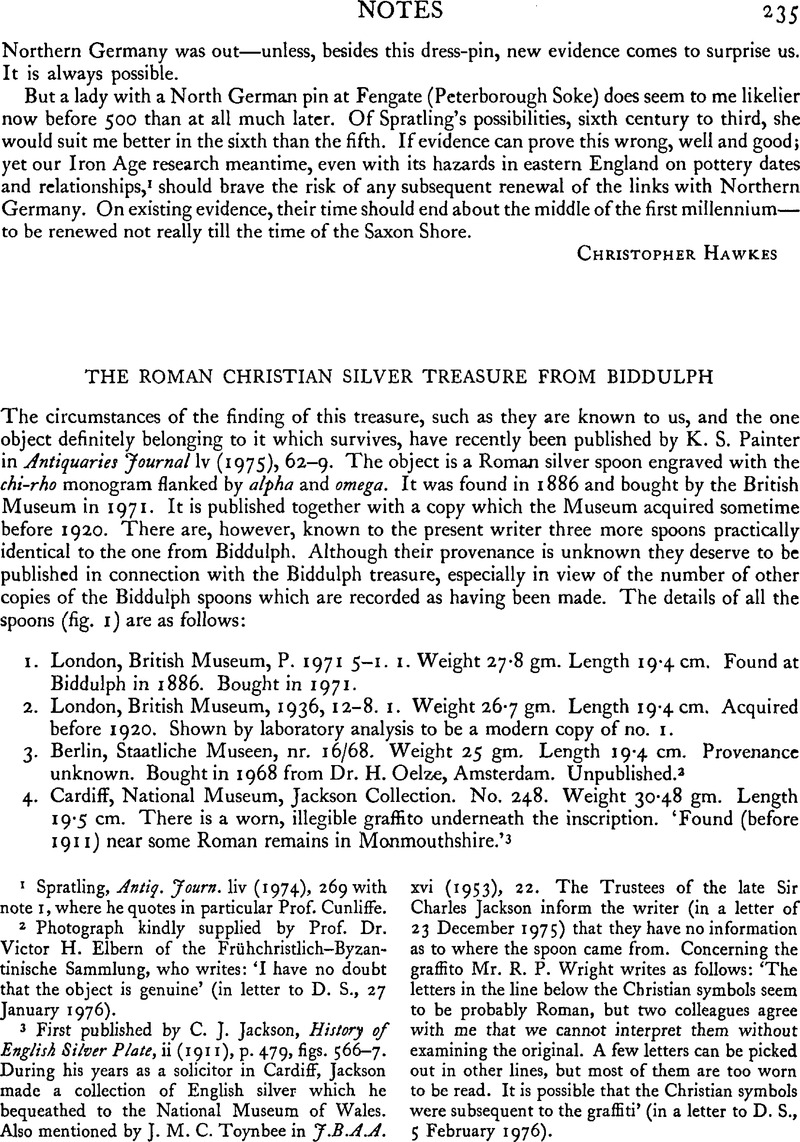Published online by Cambridge University Press: 29 November 2011

page 235 note 2 Photograph kindly supplied by Prof. Dr. Victor H. Elbern of the Frühchristlich–Byzantinische Sammlung, who writes: ‘I have no doubt that the object is genuine’ (in letter to D. S., 27 January 1976).
page 235 note 3 First published by Jackson, C. J., History of English Silver Plate, ii (1911), p. 479Google Scholar, figs. 566–7. During his years as a solicitor in Cardiff, Jackson made a collection of English silver which he bequeathed to the National Museum of Wales. Also mentioned by Toynbee, J. M. C. in J.B.A.A. xvi (1953), 22.Google Scholar The Trustees of the late Sir Charles Jackson inform the writer (in a letter of 23 December 1975) that they have no information as to where the spoon came from. Concerning the graffito Mr. R. P. Wright writes as follows: ‘The letters in the line below the Christian symbols seem to be probably Roman, but two colleagues agree with me that we cannot interpret them without examining the original. A few letters can be picked out in other lines, but most of them are too worn to be read. It is possible that the Christian symbols were subsequent to the graffiti’ (in a letter to D. S., 5 February 1976).
page 236 note 1 Published by Foltiny, Stephen in Situla xiv/xv (Ljubljana, 1974), pl. 21, 6. Information and analysis of sample scraping kindly supplied by Dr. Margaret Frazer, Metropolitan Museum: Ag 93·8, Cu 6·2, Au 0·032.Google Scholar